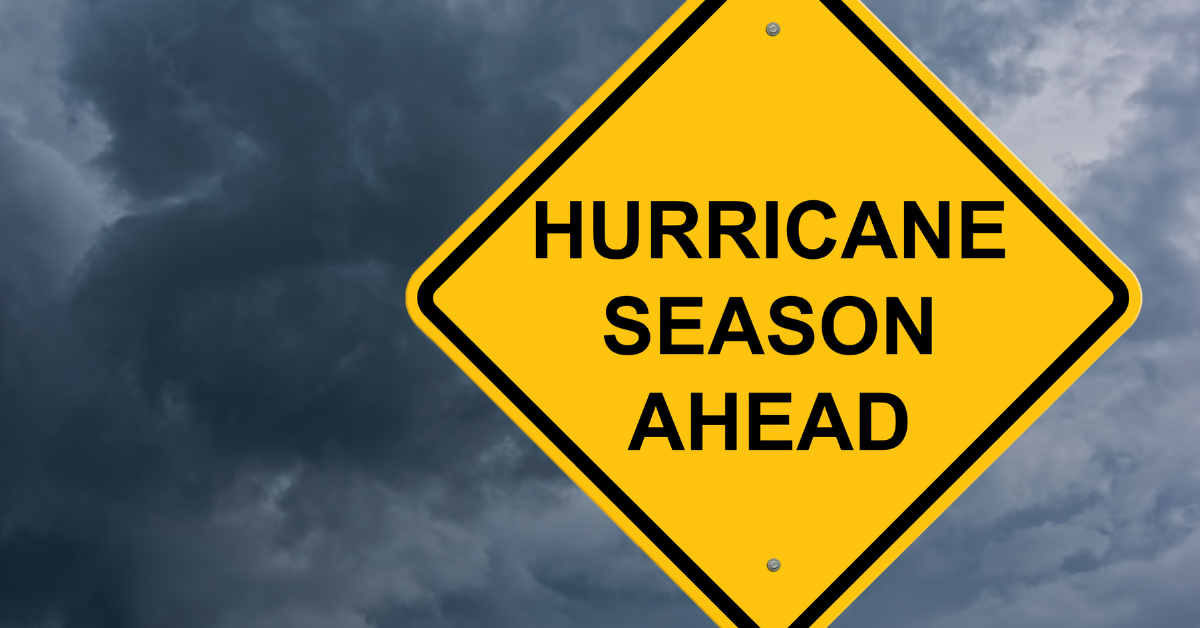6 Tips for Restoration Contractors to Prepare for Hurricane Season

As a restoration contractor, hurricane season can be a busy time, but you want to make sure you’re ready from a business standpoint. Proactively preparing for hurricane season can help you stay ahead and strengthen your business and personal preparedness.
Florida’s Hurricane Season
In Florida, the hurricane season runs from June through November. August through October are the riskiest for Florida residents because the warm waters flowing from the Gulf of Mexico often hit the winds blowing from Africa, creating tropical waves. Tropical waves are the air currents that can lead to the formation of a hurricane.
Researchers at North Carolina State predict that for the 2023 Atlantic season, we’ll see 11 to 15 storms that form in the Atlantic basin. The Atlantic basin includes the whole of the Atlantic, the Gulf of Mexico, and the Caribbean. Researchers are predicting between six and eight of the 11-15 named storms will turn into hurricanes, with two or three potentially becoming major.
The season is expected to be somewhat weaker and below average, but Florida will inevitably see storms this summer and into the fall.
So how can you prepare as a restoration contractor?
1. Build Relationships with Insurance Companies
One of the best things you can do for your business in preparation for hurricane season and in general is to start building relationships with insurance companies.
Most insurance companies will keep a list of approved contractors and share those names with their policyholders when they file a claim. The lists of approved contractors aren’t publicly available and now is when you want to try to get listed as long as you meet whatever qualifications the insurance company has.
Start by contacting insurance companies and ask for the property repair department, typically part of the claims department.
Every insurance company has requirements for things like bonding and insurance, so if there’s anything you need to do to be eligible, you’ll have a chance to complete it before storm season.
2. Get Familiar with the Assignment of Benefits
If you aren’t already, it’s a good idea to understand how the assignment of benefits works. With an AOB, as a contractor, you can be a policyholder if a homeowner assigns you the benefits of their insurance policy. This tends to be the best way for restoration contractors to work efficiently, help people return to their homes, and ensure they get paid directly by the insurance company.
3. Build Your Online Presence
When dealing with storm or water damage, homeowners will be in a hurry to find a company to help them make the necessary repairs quickly. You want to make it easy for them to find you if the situation arises. This means you want to build as much of an online presence as possible.
Now’s a good time to invest in ensuring your website is updated, accurate, and optimized for the terms people are most likely to search for when they need restoration work done.
You can also update your business profiles on social media and fill out your Google Business Profile. These proactive steps will help put you at the top of local search results if and when there’s a storm and homeowners are looking for contractors.
4. Get Your Name Out in the Community
While your online and digital presences are key, you also want to ensure you’re marketing your business in person and more traditional ways throughout the community. The hope is that people already know who you are, or there’s a sense of name recognition if a storm does happen.
You might send out mailers that give people an overview of what your business does.
5. Evaluate Your Current Suppliers
Finally, for the past few years since the pandemic, major holdups in supply chains have heavily affected contractors of all types. Those bottlenecks in the supply chains have loosened significantly, but it’s still worthwhile to look at your current suppliers and processes for getting materials. You want to ensure you’re working with suppliers who can keep up with your orders.
If you can work on strengthening your relationship with your suppliers now, it will put you in a better position after a storm when everyone is going to be clamoring to place orders. The more you focus on your suppliers and your relationships with them now, the better off you’ll be when you need them.
6. Contact the State Procurement Technical Assistance Center
Contact the Florida Procurement Technical Assistance Center (PTAC) if you’re a contractor doing disaster-response work. They offer free services that can help you register with government procurement systems and connect you with opportunities to place bids and prepare proposals.
When you contact the Florida PTAC office, they will add you to a database, and then if someone is searching for the type of work you do, your business listing will appear. After that, relevant leads are sent to the client.
Final Thoughts
Hopefully, hurricane season will be quiet in Florida this year, but you still need to prepare your restoration business accordingly.
Even beyond hurricanes, the summer and fall months are usually when you do most of your work. What you do now can prepare you for what needs to be done later in the season as you grow and build your business.
If you’re a restoration contractor, we encourage you to join the Restoration Association of Florida—our nonprofit organization advocates for mold, water, and fire remediation professionals throughout the state.
